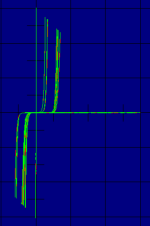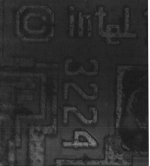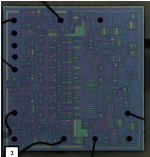daver2
10k Member
I have done de-capping at work to ensure that ICs purchased through brokers have been what was stated on the plastic. And compared the silicon to known good devices (parts taken off a donor board that we were remanufacturing).
All were good apart from an Intel 8080 clock IC. The silicon was completely different with no manufacturer markings whatsoever.
However, we only use it as an oscillator, and not for the internal reset and ready synchronisation etc. As a result, it was pretty easy to 100% test the functionality of every device and everything was good - despite it not being a 'real' Intel device.
Dave
All were good apart from an Intel 8080 clock IC. The silicon was completely different with no manufacturer markings whatsoever.
However, we only use it as an oscillator, and not for the internal reset and ready synchronisation etc. As a result, it was pretty easy to 100% test the functionality of every device and everything was good - despite it not being a 'real' Intel device.
Dave



